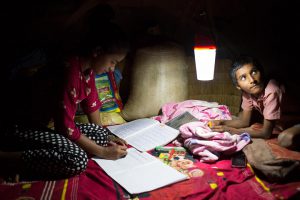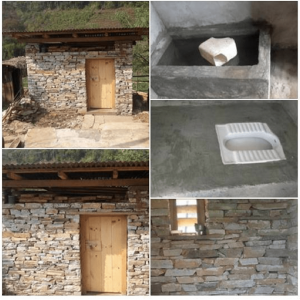A few months ago, I had the chance to visit Zurich and meet some of the people I worked with in Bangladesh in the development sector. Over dinner, I expressed my pleasure to see such improved public toilet system of Zurich, which later turned into a discussion. Two of my colleagues expressed their disgust right away for bringing toilets to the dinner table. Others, especially the women, said how relieved they were not being in Dhaka, the capital of Bangladesh, with limited or no public toilet services.
The need of toilets is real. The taboo surrounding toilets are even more striking. We do not like to talk about toilets much, even though we all use them. In 2014, I did my dissertation on public toilets. When I proposed my research topic, many of my faculties and classmates did not approve. Yet, toilets are one of the main reasons of school dropouts and why women and children are limited in movement in countries like Bangladesh.
Bangladesh’s challenges with toilets
I have lived 24 years of my life in one of the most densely populated areas, in Dhaka. The 7-mile radius city is the 4th least liveable city in the world. In fact this is an improvement, and one of the reasons is that Bangladesh has, officially, almost ended open-air defecation, unlike its South Asian neighbours.
Dhaka officially has 122 public toilets, but in reality, many of them are not functional or being used for other purposes. Most cafes or food courts do not own toilet facilities in Dhaka city which makes matters worse. For its 20 million inhabitants this is insufficient, and when there is no other option, the men usually relieve themselves on open spaces. For women, that is not an option. People who are always on the road (drivers or rickshaw pullers) are often left without an option as they must keep track of their vehicles. Others cities like Chittagong have similar problems. With a population of over 2.5 million, it has 43 public toilets with not a single toilet for females.
The health impact of this is observed in the long run. Holding on till you find a suitable place to urinate or defecate can cause severe damage to the bladder, bowel and kidney. It also has other health implications for women, such as urinary and reproductive tract infections.
In the last few years, Dhaka City Corporation, with the help of local and international NGOs, have built new toilets and equipped them with modern facilities. There is a plan for setting up 100 more public toilets in the city by 2017. How useful these places will be, remains a concern.
Three challenges
Perception matters, especially when it comes to toilets. We still feel shy talking about them. Women travelling or working often do not want to commute long distance because they do not know locations of public toilets and they often feel diffident to ask. Most of the operational public toilets are in public places, but many do not even know they exist due to lack of information or proper signage. Bringing them to public radar and breaking the taboo is the first challenge.
The second challenge is usability. Most Bangladeshis are not acquainted with high commodes or sitting toilets though they are needed for disability access. The high commodes are hard to maintain and require much more water especially when people are used to squatting toilets. Some people regard squat toilets as more hygienic compared to high commodes because they are easier to clean and there is no skin contact with the surface of the toilet seat. On the other hand, sitting toilets are perceived by many people to be more modern. Therefore they can represent a particular status. Thus installing high commodes may complicate the situation and may not yield the most efficient results.
The third challenge is the cost. Most of the new public toilets require people to pay for the service. But most users are not ready to pay the price that would allow for the maintenance of such facilities.
To make change happen, first and foremost we require changing perceptions. Toilets are a necessity and a right as well. Talking about them should not be a taboo. We do not need new and fancy utilities, instead we need sanitary, easy to use, accessible and secure facilities to protect public health and to make life easier for common Bangladeshis.
Ending open defecation is not enough
Bangladesh celebrated October as National Sanitation month to creates awareness and improve sanitary systems. The country has shown remarkable progress in open defecation compared to it’s neighbours, but a recent report that measured health-related sustainable development goals showed Bangladesh scoring only 13 (lowest in the region) out of 100 in Safe Water and 5 in Hygiene (above Nepal in the region).
Installation of public and mobile toilets will reduce open defecation to zero, but without understanding how the wide range of users use public toilets, modern and costly toilets may exclude rather than include, leaving large gaps in the Bangladesh’s health infrastructure.
![<p>[:en]Toilets installed in Kalibari area by an NGO, now unusable due to lack of maintenance [image by SuSanA Secretariat][:ne]कारण द्वारा मर्मतका [छवि कमी गर्न Kalibari क्षेत्रमा एउटा गैरसरकारी संस्थाका, अब निकम्मा द्वारा स्थापित शौचालयSusana सचिवालय][:hi]Toilets installed in Kalibari area by an NGO, now unusable due to lack of maintenance [image by SuSanA Secretariat][:bn]Toilets installed in Kalibari area by an NGO, now unusable due to lack of maintenance [image by SuSanA Secretariat][:ur]Toilets installed in Kalibari area by an NGO, now unusable due to lack of maintenance [image by SuSanA Secretariat][:]</p>](https://dialogue.earth/content/uploads/2016/11/Bangladesh-toilets-scaled.jpg)





